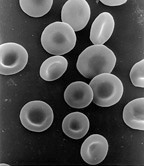

The evolution of camels is particularly well documented with many connected examples of their species’ development visible through the fossil record. There were camel-like antelope grazing on the plains of North America over 40 million years ago. They have been so successful because they are well adapted to their environment. The two types of camel left today are the dromedary, with one hump and native to the Middle East, and the much rarer two-humped Bactrian camel from Central Asia.
Got The Hump
The camel’s hump is a store of body fat. Most animals use fat as insulation but camels spend a lot of time in high temperatures so keeping it all in one place helps them to keep cool. When they need to generate body heat they can metabolise the fat to release energy, carbon dioxide and water.
Diet
Although camels favour fresh succulent plant material, they are omnivorous taking advantage of almost any food source that comes along. They are ruminants, swallowing food with little chewing, only to regurgitate the cud back into their mouths for thorough chewing at a later stage. This allows them to take advantage of such diverse and unappetising foods as bones, dried fish, meat and even leather.
Blood Cells

Camels have oval red blood cells (similar to humans), instead of round (like most other mammals), which means that they can travel around in the blood even when severe dehydration has caused the blood to become viscous. This means that camels can go without water for longer than most mammals.
Concentrated Doings
Camels don’t waste much water in their egesta either. Camel dung is so dry that it can be used as fuel for a fire, even when fresh. The kidneys of a camel are so efficient at recycling water that camel urine is like syrup.
Further reading can be found at Wikipedia and Camel Facts.
Questions…
- What reaction is releasing the energy, water and carbon dioxide mentioned in the second paragraph?
- From what molecule are plant cell walls chiefly made which makes them so hard to digest?
- Camels, like humans and most other land vertebrates, have a double circulatory system. What does this mean?
1. Metabolism
2. Cellulose
3. This means that blood passes through the heart twice with one circuit for oxygenated blood and one for deoxygenated blood.
Thanks for another thoroughly interesting post!
Fab stuff as ever and thank you for your support of the blog. It has been much appreciated.
1. Metabolism.
2. Cellulose.
3. This means that blood leaves through the arteries ( Mostly)as oxygenated and returns via veins to the heart as deoxygenated blood (mostly).
Oh my Lordy! How lovely to hear from an SFScience Legend!
Q1 – I think that this question is specifically looking for “respiration“.
Q2 – indeed!
Q3 – we need to emphasise the double nature of the mammalian system. It visits the heart twice on its way round the circulatory system.
How are you? I hope you have had a good time this year so far.
Thank you for the interesting post. It was very enjoyable to read
You are welcome!